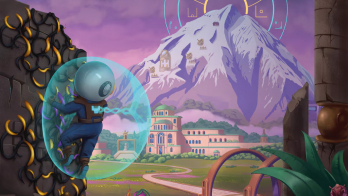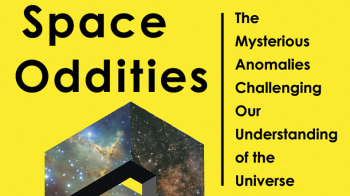The outreach project Tactile Collider is changing the way particle physicists engage with visually impaired and other important audiences, writes founder Rob Appleby.
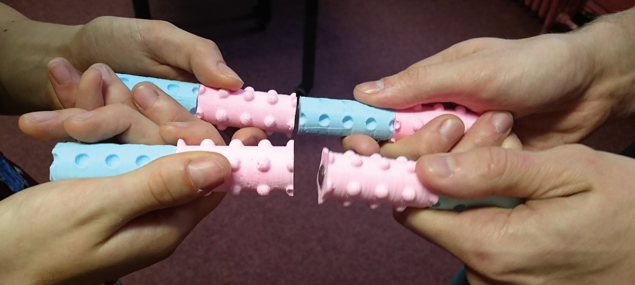
We have many fantastic achievements in our wonderful field of research, most recently the completion of the Large Hadron Collider (LHC) and its discovery of a new form of matter, the Higgs boson. The field is now preparing to face the next set of challenges, in whatever direction the European Strategy for Particle Physics recommends. With ambitious goals, this strategy update is the right time to ask: “How do we make ourselves as good as we need to be to succeed?”
Big science has brought more than fundamental knowledge: it has taught us that we can achieve more when we collaborate, and to do this we need to communicate both within and beyond the community. We need to communicate to our funders and, most importantly of all, we need to communicate with wider society to give everyone an opportunity to engage in or become a part of the scientific process. Yet some of the audiences we could and should be reaching are below the radar.
Reaching high-science capital people – those who will attend a laboratory open day, watch a new documentary on dark energy or read a newspaper article about medical accelerators – is a vital part of our work, and we do it well. But many audiences have barriers to traditional modes of outreach and engagement. For example, groups or families with an inherently low science background, perhaps linked to socio-economic grouping, will not read articles in the science-literate mainstream press as they feel, incorrectly, that science is not for them. Large potential audiences with physical or mental disabilities will be put off coming to events for practical reasons such as accessibility or perhaps being unable to read or understand printed or visual media. In the UK alone, millions of people are registered as visually impaired (VI) to some degree. To reach these and other “invisible” audiences, we need to enter their space.
Inspired by the LHC
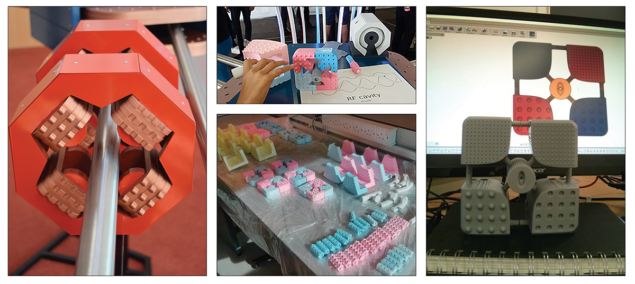
When it comes to science engagement, which is a predominantly visual interaction, the VI audience is underserved. Tactile Collider is a communication project aimed at addressing this gap. The idea came in 2014 when a major LHC exhibition came to Manchester, UK. Joining in panel discussions at a launch party held at the Museum for Science and Industry, it became clear that the accessibility of the exhibition could be improved. Spurring us into action, we also had a request from a local VI couple for an adapted tour. I gathered together some pieces of the ATLAS forward detector and some radio-frequency cavity models, both of which had a pleasing weight and plenty of features to feel with fingers, and gave the couple a bespoke tour of the exhibition. The feedback was fantastic, and making this tactile, interactive and bespoke form of engagement available to more people, be it sighted or VI, was a challenge we accepted.
With the help of the museum staff, we developed the idea further and were soon put in touch with Kirin Saeed, an independent consultant on accessibility and visually impaired herself. Together, we formulated a potential project to a stage where we could approach funders. The UK’s Science and Technology Facilities Council (STFC) recognised and supported our vision for a UK-wide project and funded the nascent Tactile Collider for two years through a £100,000 public-engagement grant.
We wanted to design a project without preconceptions about the techniques and methods of communication and delivery. With co-leaders Chris Edmonds of the University of Liverpool and Robyn Watson, a teacher of VI students, our team spent one year listening to and talking with audiences before we even considered producing materials or defining an approach. We spent time in focus groups, in classrooms across the north of England, visiting museums with VI people, and looking at the varied ways of learning and accessing information for VI groups of all ages. Training in skills such as audio description and tactile-map production was crucial, as were the PhD students who got involved to design materials and deliver Tactile Collider events.
Early on, we focused on a science message based around four key themes: the universe is made of particles; we accelerate these particles using electric fields in cavities; we control particle beams using magnets; and we collide particle beams to make the Higgs boson. The first significant event took place in Liverpool in 2017 and since then the exhibition has toured UK schools, science festivals and, in 2019, joined the CERN Open Days for our first Geneva-region event.
Content development
A key aspect of Tactile Collider is content developed specifically for a VI audience, along with training the delivery team in how to sight-guide and educating them about the large range of visual impairments. As an example, take the magnetic field of a dipole – the first step to understanding how magnets are used to control and manipulate charged particle beams. The idea of a bar magnet having a north pole and a south pole, and magnetic field lines connecting the two, is simple enough to convey using pencil and paper. To communicate with VI audiences, by contrast, the magnet station of Tactile Collider contains a 3D model of a bar magnet with tactile bumps for north and south poles, partnered with tactile diagrams. In some areas of Tactile Collider, 3D sound is employed to give students a choice in how to interact.
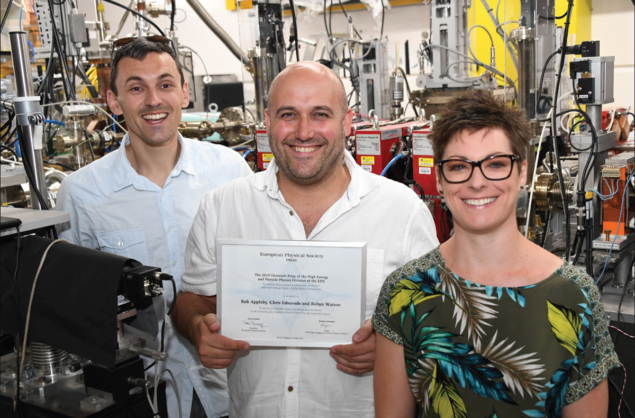
The lessons learned during the project’s development and delivery led us to a set of principles for engagement, which work for all audiences regardless of any particular needs. We found that all science engagement should strive to be authentic, with no dumbing down of the science message and delivered by practicing scientists striving to involve the audience as equals. Alongside this authentic message, VI learners require close interaction with a scientist-presenter in a group of no bigger than four. The scientist should also be trained in VI-audience awareness, sighted guiding, audio description and in the presentation of a tactile narrative linked to the learning outcomes. Coupled with this idea is the need to train presenters to be able to use the differing materials with diverse audience groups.
Tactile Collider toured the UK in 2017 and 2018, visiting many mainstream and specialist schools, and meeting many motivated and enthusiastic students. We have also spent time at music festivals, with a focus on raising awareness of VI issues and giving people a chance to learn about the LHC using senses other than their eyes. One legacy of Tactile Collider is educating our community, and we are planning “VI in science” training events in 2020 in addition to a third community meeting bringing together scientists and communication professionals.
There is now a real interest and understanding in particle physics about the importance of reaching underrepresented audiences. Tactile Collider is a step towards this, and we are working to share the skills and insights we have gained in our journey so far. The idea has also appeared in astronomy: Tactile Universe, based at the Institute of Cosmology and Gravitation at the University of Portsmouth, engages the VI community with astrophysics research, for example by creating 3D printed tactile images of galaxies for use in schools and at public events. The first joint Tactile Collider/Universe event will take place in London in 2020 and we have already jointly hosted two community workshops. The Tactile Collider team is happy to discuss bringing the exhibition to any event, lab or venue.
Fundamental science is a humbling and levelling endeavour. When we consider the Higgs boson and supernovae, none of us can directly engage with the very small or the far or the very massive. Using all of our senses shows us science in a new and fascinating way.






